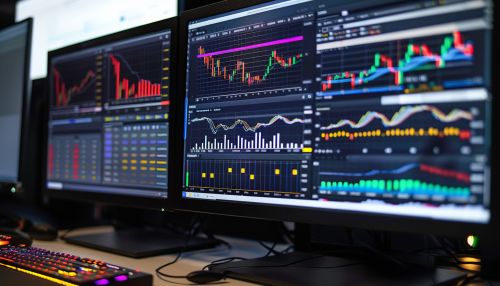Stochastic models
Introduction
Stochastic models are a type of mathematical model that incorporate random processes. They are used to represent systems or phenomena that exhibit uncertainty or randomness. These models are widely used in various fields such as physics, chemistry, biology, finance, and engineering. The term "stochastic" comes from the Greek word "stokhazesthai" which means "to aim at a target or to guess", reflecting the uncertainty inherent in such models.


Stochastic Processes
A stochastic process is a collection of random variables representing the evolution of a system of random values over time. It is the key concept in the theory of stochastic models. Stochastic processes can be classified into different types based on their characteristics. These include Markov processes, Gaussian processes, and Poisson processes, among others.
Markov Processes
Markov processes are named after the Russian mathematician Andrey Markov. They are characterized by the Markov property, which states that the future state of the process depends only on the current state and not on the sequence of events that preceded it. This property makes Markov processes memoryless, which simplifies their analysis and application.
Gaussian Processes
Gaussian processes are a type of stochastic process where any collection of random variables has a multivariate normal distribution. They are named after the German mathematician and physicist Carl Friedrich Gauss. Gaussian processes are widely used in machine learning, particularly in the field of Bayesian inference.
Poisson Processes
Poisson processes are another type of stochastic process, named after the French mathematician Siméon Denis Poisson. In a Poisson process, the number of events in any interval of time or space is a random variable with a Poisson distribution. Poisson processes are widely used in queueing theory, telecommunications, and reliability engineering.
Applications of Stochastic Models
Stochastic models have a wide range of applications in various fields due to their ability to represent uncertainty and randomness.
In Physics
In physics, stochastic models are used to describe systems that are inherently random. For example, in statistical mechanics, the behavior of a large number of particles is described using stochastic models. Similarly, in quantum mechanics, the behavior of particles is often modeled stochastically due to the inherent uncertainty in their positions and velocities.
In Biology
In biology, stochastic models are used to represent the randomness in biological processes. For example, in population genetics, the genetic variation in a population is often modeled using a stochastic process. Similarly, in epidemiology, the spread of diseases is often modeled using stochastic models to account for the randomness in the transmission of the disease.
In Finance
In finance, stochastic models are used to model the behavior of financial markets. For example, the Black-Scholes model, which is used to price options, is a stochastic model. Similarly, the Vasicek model, which is used to model interest rates, is also a stochastic model.
Conclusion
Stochastic models are a powerful tool for representing systems that exhibit randomness or uncertainty. They have a wide range of applications in various fields, from physics to finance. Despite their complexity, they provide a robust framework for understanding and predicting the behavior of complex systems.
